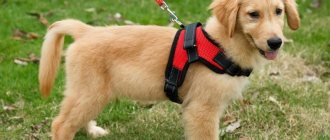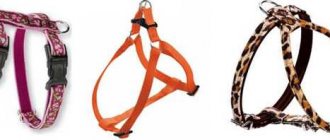Every third four-legged friend has been lost at least once. Unfortunately, 90% of the total number of lost animals are not returned to their owners. Despite the use of collars with phone numbers and branding, many pets disappear without a trace. The microchipping method, recently created for identification purposes, can be used to help find pets. How to find a dog by chip, what are the features of this procedure, read on.
How to find a dog by chip
Where and how to look for a dog
The answer to the question of where to look for a dog is clear - you need to look for the dog exactly where it is lost, and in places where it is regularly walked.
The dog is guided by smell, so if you put your thing in nearby walking areas, then it can follow the smell and stay waiting for the owner. One of the important conditions for finding a lost dog is posting notices about the missing pet. Give a photo and a detailed description of the dog's appearance; information about the reward will not be superfluous. If the dog is a rare breed, don't mention it: there are a lot of scammers. Make the tear-off strips large, and briefly duplicate the text on them with the signs of the dog, since many are not able to remember what kind of piece of paper it is with a phone number. Post notices in all veterinary clinics, pharmacies and pet stores, in nearby areas with large crowds of people, near garbage containers and in traditional dog walking areas. If the dog is lost in the country, go around the nearest villages. Don’t forget about schools and playgrounds, because children are excellent detectives and are happy to earn extra money.
Another tip on how to find a lost dog is to personally go to all dog boarding centers, veterinary centers and shelters, and hand out notices to employees.
If the dog has a mark (chip), then warn your club, breeder or kennel.
How does the dog microchipping procedure work?
It should be noted right away that the procedure is painless and quick, taking only a couple of minutes. It is carried out in a veterinary clinic, but it is possible to call a specialist to your home.
The procedure begins with the veterinarian conducting a clinical examination of the animal and checking the veterinary passport for vaccinations. Then, using a disposable syringe, he implants a microchip already loaded in the syringe under the dog’s skin in the withers area.
Then, using a scanner, the data is read from the implanted microchip and transmitted to a computer. By the way, using a scanner you can detect a microchip at a distance of 45 cm. From the computer, data that includes information about the dog’s owner, name, gender, date of birth, vaccinations of the animal, as well as a fifteen-digit code and information about the institution where the electronic tagging was carried out, are entered into the database of microchipped animals. There is no single database in Russia, but the most common are Animal-id and AnimalFace. In the future, you can make changes to the database, as well as transfer data from one database to another.
The veterinarian makes notes about microchipping in the veterinary passport and fills out a registration certificate (identification card), which he gives to the dog owner.
After the procedure, you need to ensure that the animal does not scratch the implantation site for 2-3 days, and refrain from washing the animal. Minor movements of the microchip under the skin are acceptable until it is completely overgrown with living tissue. The microchip cannot reach the surface of the skin. The microchip is visible on the x-ray.
Is microchipping required to travel abroad?
Yes, definitely! At the veterinary control at the airport, they will definitely check whether your pet has a microchip. When planning your trip, carefully study the rules for importing animals into the country. In some countries, for example in the European Union, microchipping is required before or on the day of rabies vaccination.
The cost of microchipping a dog in our clinic is 1200 rubles. The price includes consumables and the work of a veterinarian. For this money you will protect your four-legged friend for life.
Back
Finding a lost dog using a chip
Not all pet owners know whether it is possible to find a dog using a chip. If your pet is lost or stolen, you need to contact the Unified Database of Microchipped Animals.
What to do if you lose your microchipped pet
On the official website of the dog chip database there is a virtual bulletin board where information about finding pets is posted. The owner of the dog must fill out an advertisement according to the provided sample, which will immediately go to the “Animals Wanted” page. The dog’s electronic passport card will display a note about its loss.
The database of chipped dogs allows you to find out information about the search on all search engines on the Internet within a day. If the dog's thieves try to take it outside the state or go to a veterinary clinic, when you scan the chip and enter the verification code, you will be able to see information that the pet is wanted.
Pets with a chip remain in the database for a long time
After a while, you need to monitor the activity of the application in the database on the website. If chipping was carried out a long time ago and there is no data, you should fill out the registration application yourself. The safety of a pet depends primarily on the vigilance and attentiveness of the owner.
Scanning device
How to stop a dog from barking at the dog and at everyone
Scanners are actively used in veterinary clinics and some other places, for example, at the airport when registering a pet. The device allows you to easily read the information contained in the chip and display it on the screen. Thus, the data transfer process will take a matter of seconds.
The cost of such a scanner depends on its type. Prices in various stores start at 6,000 rubles* and can reach several times that amount.
Types of branding
There are many situations where a tattoo helped to find a lost animal. In addition, the tattoo provides buyers with the guarantee that they will receive the purebred puppy that they initially chose when inspecting the litter. Also, the branding procedure is mandatory if the dog is planned to be sent to Russian and international exhibitions.
Animal identification is possible in two main ways:
- by tattoo;
- by chip.
The second option is more preferable, since searching for an owner using a dog’s brand takes more time than if an electronic chip is implanted into it. If the animal runs away or is stolen, you can determine its exact location in just a few minutes. However, if breeding purebred puppies is not just your hobby, but also a means of earning money, then applying a tattoo is also desirable, since it can be used to track the dog’s pedigree, which, in turn, will increase its value.
Registration of animal owners in the EDB Animal-ID.RU
How to register as an owner of microchipped animals in the unified database Animal-ID.RU and link all your animals to your profile.
Why is registration and profile management done?
- For clarity of information about a microchipped animal;
- To speed up communication with you in cases of loss/theft of your pet;
By default, the card of a chipped animal on the portal contains only brief information about the animal itself and data from the clinic or nursery where the chipping was carried out. This allows you to make sure that it is this particular animal, and not any other of a similar gender, breed, or color. And also contact the clinic, nursery, whose coordinates are indicated in the map, and with their help, inform the owner in cases where a lost item is found.
When the owner registers on the Animal-ID.RU portal and fills out the profile of both the owner and the pet, the search result by microchip number looks completely different and much more informative.
What benefits await you:
- You can independently update your contact information about your location or method of communication at any time;
- You eliminate intermediaries and accordingly speed up the process of returning a lost pet or resolving other issues;
- You can change the data in your pet’s card (Name, Color, Tattoo, Additional information or special features);
- Upload photos of your pet, which will be displayed as an interactive gallery;
- Get consultation, help, advice using the Animal-ID.RU Forum.
The difference is obvious, the pet card linked to your profile immediately makes it clear that this animal has an owner who loves and cares for it!
Now about how to register and manage your profile
As a result of the actions taken, we see the profile of the animal, which we can edit. If there are several attached animals, then you can switch between their profiles by clicking on the corresponding thumbnail. You can leave questions, additions, and suggestions in the Administrative section of the Animal-ID.RU Forum.
What is a chip
A chip, or transponder, is a microscopic device containing digital information in the form of a code. The microcircuit is located inside a bioglass capsule. The standard size is 12 mm in length and 2 mm in diameter. But there is also a mini version: 8 mm in length and 1.4 mm in diameter. Small capsules are used for microchipping small dogs, as well as cats, rodents, reptiles and other small animals. The characteristics of shortened chips are practically no different from standard ones. They have a shorter reading range, so there is no particular point in putting them on a dog - such devices were created for small animals that cannot be implanted with a full-size transponder.
Main elements of the chip:
- receiver;
- transmitter;
- antenna;
- memory.
The chips are sold already programmed; the manufacturer has a 15-digit code stored in memory. The first 3 digits are the country code, the next 4 are the manufacturer, the remaining 8 are a unique number assigned to a specific animal. The device is read-only; It is not possible to change digital information.
All codes are entered into the database along with information about the animals to which they belong. The breed, name of the dog, its state of health, vaccinations received, name, telephone number and address of the owner are indicated. All devices are standardized according to the ISO and FDX-B systems. The Unified Technical Regulations make it possible to obtain data about a dog in any country in the world if there is a scanner. There is no general global database yet - information can be entered into any that the veterinary clinic works with. But there are several large search sites that are linked to various databases from around the world. In Russia, “ANIMAL-ID” is considered the most popular and convenient, containing almost 300 thousand records.
The capsule with the chip is sterile and is sold sealed inside a special syringe. The transponder is contained in a liquid that facilitates insertion and healing. The capsule material is biologically compatible with animal tissues and does not cause rejection.
Databases of microchipped animals
After the procedure is completed, the owner receives a special code that allows him to identify the dog. All information about the animal captured in the chip is entered into the database. If your pet gets lost, you can simply enter the number to determine if someone has found it.
This small capsule stores all the information about the dog, which is also transferred to the database
ANIMAL-ID is one of the most common Internet portals among owners. The All-Russian unified database of microchipped dogs is a convenient platform that allows you to view information about your pet, its pedigree, vaccinations and diseases. If you lose an animal, you can place an ad indicating the breed, special features, and number.
AnimalFace is another platform that unites not only Russian, but also pets from the CIS countries. To check a dog's chip in the database, just enter its number, gender and breed of the animal. This is a convenient site to report a missing pet and inform other owners about your found pet.
Note! The advantage of the portal is that the data of the dog registered here is translated into English. This will help you travel easier
how to find a microchipped animal
It then scans the chip to confirm its functionality. Using a subcutaneous injection, the veterinarian inserts the chip into the animal and scans it again to ensure that the procedure was successful. The chip number is written down in the animal's passport or a special sticker with the chip number is attached there, which is attached to most chips.
What is the structure of the microchip code and why is it needed?
The first three digits of the code can be the microchip manufacturer code or the country code. The next three digits may be an area code.
This coding is not universally accepted and has lost its meaning with the advent of databases available on the Internet. The structure of the code itself does not convey meaningful information. The code is an identifier that allows you to find information about the animal and its owner in the database. For this reason, we use chips without country and area codes.
At what age can kittens and puppies be microchipped? Kittens and puppies can be microchipped from five weeks of age, prior to vaccination. Of course, microchipping can be done at a later age at any time.
My puppies are very small, can they be microchipped? Of course you can. Our microchips are also used to identify very small animals, such as hamsters, mice, and poultry.
Can wild animals be microchipped? Yes, you can. Microchipping of wild animals is used for scientific purposes to control their numbers, migration and other things.
Where else can microchips be used? Microchips are a universal means of identification. Using chips, you can confirm the authenticity of various valuables, sculptures, paintings, things and antiques.
Microchipping of people is currently being successfully developed. The countries of Latin America became the pioneers of this business. We are receiving requests from Russians about the possibility of using our chips to electronically tag people.
There are no technical problems for microchipping people, but this area of application of chips is not legally defined. People who decide to have a microchip implanted do so at their own peril and risk. However, we believe that implanting chips in people is a very useful procedure, especially for identifying military personnel and those working in high-risk environments, as well as the sick and criminals. We are ready to register such enthusiasts in our database.
Information from the pet-id website
Why spend extra money if there is already a stigma?
Today in Russia, all purebred dogs are necessarily branded before they are sold. The brand is letters (belonging to a club or kennel) and numbers (puppy number). That is, there is no connection to the owner. If the breeder suddenly decides that there is no need to return the lost puppy, the owner may never know that his pet was found and given to other people. A chip is a link directly to the owner, while a brand is used to find a breeder.
Stigma is painful (like getting a tattoo) and in some ways dangerous (the possibility of infection from a dirty needle and inflammation of the injured skin). Of course, dogs have a higher pain threshold, but many puppies still squirm and squeak when pricked by a thin needle. The most obvious consequence of worrying during stamping is the lack of clarity of the design. In addition, the tattoo wears off over time - it fades and sooner or later blurs, even if the puppies were branded by an experienced dog handler with the highest quality machine. An unreadable brand is easy to update, but owners always put off this procedure until later. But scammers who resell dogs always immediately interrupt the stigma by adding dash sticks over the old number. And the person who finds the dog may simply not notice the mark hidden by the thick fur.
For these reasons, branding has long been abandoned in the USA and Europe; puppies there are microchipped before sale (many Russian breeders do the same). RKF will certainly follow this excellent example in the near future, since the advantages of an indestructible and inseparable chip over a short-lived tattoo are obvious. In addition, microchipping of dogs for traveling abroad is gradually becoming a requirement. For example, a dog without a chip will no longer be allowed into the States and Europe.
From a financial point of view, branding is, of course, cheaper: the cost of microchipping in Russia in 2014 is about 1,200 rubles, and the cost of branding one puppy is about 350 rubles. But the advantages of the chip more than cover the “extra” expenses. Residents of large cities can also have their dogs microchipped for free by contacting a public clinic. Similar promotions to attract owners are held several times a year; you can find out about the dates directly at the clinic. In both capitals of Russia, animals are microchipped for free all the time, outside the deadlines (the only condition is that the owner must have Moscow or St. Petersburg registration). The addresses of public clinics providing this service can be found online or at your local kennel club.
This is a must know
Dog owners should consider the following:
- Chipping can be done as early as 45-50 days of the puppy’s life.
- Make sure your doctor scans the microchip before the implantation procedure begins and after the device is inserted under the skin.
- After microchipping, carefully inspect the implantation site to make sure that the injection was done correctly and that the chip went under the skin and did not remain in the fur.
- One to two weeks after the procedure, take the time to visit the veterinary clinic and check if the microcircuit is in place.
- When bringing your pet for a routine examination, be sure to ask the doctor to scan the microchip. This way you will make sure that it is in good working order and that it has not “migrated” anywhere.
- Be sure to paste stickers with an individual barcode into the veterinary passport and into the pedigree of your pet.
To summarize, I would like to note that despite possible deviations, most dog breeders are still satisfied that they had their pet microchipped.
Once we decided that our Jack would travel with us, we also went to the veterinary clinic and had him microchipped. Now we can safely travel with him around our country and abroad, without worrying that our beloved little dog will sit and wait for us while we have fun. Now we try to always take it with us, and this is a huge plus.
Despite the fact that currently implantation of a microchip is considered one of the most progressive and reliable methods of identifying an animal, you should not abandon proven methods. A clearly marked brand, address card or information about the owner indicated on the animal’s collar increases the chances of finding and returning a lost tailed dog home.
Take care of your pets!
Installation Features
The chip is installed in every major veterinary clinic. The duration of the procedure is several minutes.
A microchip is implanted in the area under the withers
Sterility of the procedure
Manufacturers have provided for hygienic safety of manipulation:
- All elements of the device are sterilized and ready for use.
- Sterilization was carried out using ethylene oxide.
- The package is equipped with a yellow group of indicators confirming the completion of sanitary treatment. If they are missing, you should not use the device.
- The needle is equipped with a plastic tip.
The package contains several barcodes intended for pasting into registration documents.
Equipment for chipping
Features of the procedure
It is not recommended to inject yourself.
Features of manipulation:
- Scanning your pet for an implanted device. This is done in order to prevent repeated chipping.
- Checking the functioning of the microchip.
- Comparison of the 15-digit code indicated on the packaging and on the scanner display. The numbers must match.
- Treatment of the area for implantation.
- Introduction of a liquid solution with a microchip.
- Inspection of the implantation area. You need to make sure that the chip goes under the skin and does not get caught on the hair.
- Microchip scanning.
- Entering the code and date of the procedure in the passport.
- Filling out and submitting an application for registration to the Database.
- Pasting stickers with a code into the animal’s passport and pedigree.
A code consisting of 15 characters is entered into the animal’s passport.
Entering the code into the International Database is the most important step. Until it is entered into the system, electronic identification of the dog is not possible.
After manipulation, the animal should not wash the injection area for 2 days. If your dog is a fidgety dog, it is advisable to protect this area with a protective collar. A few weeks after the procedure, you need to visit the veterinary clinic and examine the location of the chip.
Microchip migration
Migration is a deviation of the capsule by more than 20 mm from the area of implantation. The displacement is due to the characteristics of the injection area and the reaction of surrounding tissues to a foreign object.
In rare cases, there is a displacement of the microchip from the implantation site
Factors influencing migration:
- When the chip was implanted, the pet was emotionally agitated, which prevented the injection from being administered correctly.
- The chipping was carried out by a non-professional.
- The injection site was chosen incorrectly, which led to the incorrect placement of the chip in the muscle tissue and caused movement.
An injection performed in the withers area is considered optimal. This is due to the fact that the microchip embedded in this area is in a fixed state due to the pressure of the muscle tissue.
At what age is a dog microchipped?
The procedure is carried out already on the 45th day of the pet’s life. According to international standards, vaccination may not be counted if the dog was not microchipped at the time of vaccination.
Vaccination of puppiesHow much does the procedure cost?
The cost of manipulation varies from 600 to 2,000 rubles. The price is determined by the location of the procedure - at home or in the clinic. In the constituent entities of the Russian Federation, this service is approximately 20% cheaper than in Moscow and the northern capital.
The cost of chipping varies from 600 to 2,000 rubles
In what situations is microchipping necessary?
In addition to the fact that the introduction of a chip increases the chances of success in finding a pet, there are situations prescribed by law. Chipping is mandatory in the following cases:
- Despite the fact that it is possible to transport an animal within Russia without an electronic passport, a chip is required when entering the territory of the United States, EU countries and Israel.
- Participation in international championships.
In all other situations, the chip is installed at the request of the owner.
For international exhibitions, microchipping is mandatory
Contraindications for the procedure
Since this manipulation is safe, there are practically no restrictions on implanting a microchip. Injection is prohibited under the following circumstances:
- Diseases. The work of the immune system in any pathology is aimed at the causative agent of the disease and additional stress on the body is not welcome.
- Presence of a microchip. Re-chipping is prohibited.
If your pet is 6 weeks old, you can start implanting a microchip.
By appearance
How to check the authenticity of a dog's pedigree? If the owner holds a document of a certain type in his hands, then he can be sure that the pedigree is real. It's all about the hologram and watermarks, which are noticeable upon closer inspection of the pedigree, as well as in the profile image of the greyhound.
Let's talk a little about deciphering the RKF pedigree. In the center are the dog's details: name, breed, date of birth, brand, color, breeder and owner. The document must contain information about the pedigree and its serial number in the RKF.
Under the numbers “1” and “2” are the dog’s father and mother, followed by grandparents, great-grandparents.
Section 2 Question on identifying animals with a microchip.
Transponders (microchips) differ in data transmission technology, coding frequency, standard and size.
For non-productive animals, the standard transponders in Europe and the most common in the world are FDX-B transponders with a frequency of 134.2khz and a size of 2.12 * 12 mm, which must comply with the international standard ISO 11784 and tested in accordance with the ISO 24631-1 standard. For small breeds of animals, smaller transponders are sometimes used, usually 1.5 * 9 mm.
And for productive animals of large breeds, slightly larger transponders can be used, about 3.85 * 23 mm. For such animals, transponders contained in ear tags are also often used. HDX microchips are sometimes used for farm animals.
Source
What does the dog's mark mean and where?
If you keep a purebred dog, then it must have a brand. All breeders are well aware of where it needs to be placed: for this purpose, a place is chosen on the inside of the right thigh or right ear. In essence, the brand is a regular tattoo.
The branding procedure for dogs must take place in the place of their birth. Thanks to it, you can determine the club or nursery where the animal was bred. Usually the mark contains a combination of several letters and numbers:
- by the first you can recognize a club or nursery;
- according to the second - the serial number of the animal in this club.
However, the stigma acquires the greatest value in the event of a missing dog. Then, if random people come across a lost animal, then, by looking at the brand, they can easily determine its owner. It is enough to contact the club, which can provide complete information about the dog’s owner.
Today, the procedure for branding purebred dogs is under the jurisdiction of the RKF. The key document defining the rules of operation of this organization is the RKF regulation on breeding work. According to it:
- the procedure for branding puppies must be carried out by representatives of a cynological organization or kennel;
- every animal that is included in the RKF database must have a brand;
- The mark is placed in the area of the dog’s ear or groin;
- after installing an identifying tattoo, its code must be registered with the RKF;
- If desired, the dog owner can add a microchip in addition to the brand, but this operation should only be carried out by a veterinarian.
Tag on a dog's collar - dog passport
In some cases, the tags on the dog's collar are enough to find a lost dog. But she can only help if the dog ends up with honest people, then you can expect that the pet will return to its owner pretty soon. But if you have already lost hope that the dog will be returned to its previous owner, the new owner should find out the name and age of the animal.
What is chipping and why is it needed?
This procedure is one of the basic ones, therefore it is well worked out by veterinarians and does not cause any complications. Electronic identification of animals involves the introduction of a small capsule with a chip, which contains all the basic information about the animal.
A chip is a small microcircuit that stores all information about a dog and makes it easier to find it
For your information! Chipping is harmless to the dog, does not cause it discomfort, and does not limit its movement.
There are no laws in the Russian Federation that oblige owners to carry out this procedure; it is voluntary. However, the chip may be required to participate in exhibitions. It is also required to cross the borders of many European countries.
It is useful to microchip an animal just for safety reasons. After the procedure, the dog is entered into the database, indicating all the information about it and its owner. This helps you find your pet faster if it runs away.
How much does a dog chip cost?
Not everyone can afford the large additional costs of a pet, so the price of microchipping is a concern for many. The first step is to find a veterinarian who offers these services. The exact cost depends on the price list of the clinic or private doctor - it is impossible to predict exactly, but estimate approximately 1000–3000 rubles. Of course, the professionalism and qualifications of the doctor are of great importance. Choose a veterinarian who follows all standards and has all the necessary licenses and permits.
Entering an identification number into the database is usually also paid - up to 1000 rubles. This is a one-time fee - you won't have to pay it again. If you want data to be stored in several databases, you will have to pay several times. But sometimes chip registration is already included in the price offered by the veterinarian.
It is also worth remembering about free databases - they are not very popular, but it is better to register there too.
Why is it better to microchip your dog?
Microchipping dogs brings a number of significant benefits to the owner:
- Implanting a microchip is safer and painless than tattooing a dog with a number;
- The biocompatibility of the material with the animal’s body is at the highest level, there will be no allergies;
- The service life is limited only by the life of the pet, all information remains relevant;
- A microchip cannot be faked, nor can it be removed. The brand will turn pale, become overgrown with hair, and can be killed;
- With the microcircuit you can find your lost item, or detect it in case of theft. If someone has found a dog, he can find out who its owners are at the nearest veterinary clinic based on the number from the chip in the database. The address from the collar may fall out, become damaged, or be removed by someone;
- A document such as a pet's chip cannot be interrupted. This attempt will be reflected in the database. You cannot replace an animal at an exhibition or competition, or take it abroad illegally;
- The cost of the sensor is low;
- With the help of microchipping, they control the number and movements of street dogs, find out whether they are sterilized, and whether they have been vaccinated against rabies.
It's also worth learning about the disadvantages. There is a rare case of demagnetization - such a chip cannot be scanned. “Gray” microchips may also be available for sale. Such a device will not contain information about the manufacturer and quality of the product, and data from it cannot be registered in an electronic database. The possibility of identification is already excluded. The price of such counterfeits is low, there is no point in saving, because the original product is not too expensive.
How to find a lost dog
A microchipped dog is much easier to find than one without a chip. The pet dog can be seen immediately, it will be brought to the clinic, the scanner will detect the code, the database will show all the information, the dog will be identified and returned to the owner.
The owner himself declares that the dog is lost. He is waiting for information, in most cases, the operation to return the missing barking friend to the bosom of the family is successful to the delight of everyone.
How to purchase a GLONASS GPS beacon (for animals, cars, relatives)?
Using our website it’s easy! Leave a request (it will be processed quickly), discuss delivery details with our consultant, if necessary, ask the manager any questions you have and wait. The product will be sent as soon as possible - and it will “arrive” to you within the specified time frame.
When will payment for the order be made? Only after receiving the GLONASS GPS beacon for animals in your hands after handing it over to the courier.
How did a cat or dog appear in your home? Sometimes this happens unexpectedly: for example, friends gave it as a gift. In many cases, such a decision becomes the result of lengthy debates at the family council, where its small participants express dozens of arguments in favor of a silent friend. It also happens that the question of whether to have or not to have a reliable security guard in the house remains an issue.
The first days after the pet appears, everyone gets used to each other, then the adaptation period is replaced by an absolute understanding that the new friend is a full member of the family. And if one day he disappears, the family is not just panicked - everyone perceives it as a great tragedy.
Who and where carries out the branding procedure?
So what do you need to know about this? Having information only about how to find a dog’s owner using a brand is not enough. You should also have an idea of what kind of specialist and in what organization has the right to apply an identifying tattoo to the body of animals. The thing is that this procedure is clearly regulated by current legislation.
The regulation clearly states that the mark must be located on the inside of the ear or on the groin area of the peritoneum. To apply it, you do not need specialized education or any advanced training courses, but the specialist must have some experience in performing the operation.
In fact, you can apply an identifying tattoo to an animal in any veterinary clinic, but in practice it is not so simple. Not all organizations have the necessary equipment at their disposal. Therefore, the safest option would be to contact a kennel that professionally breeds purebred dogs. They will not only do everything you need, but will also tell you in detail how to find a dog by brand on the Internet.
GPS monitoring to determine the location of animals
Thanks to the GPS satellite surveillance system, you can track your dog's location with high accuracy. Attaching a transmitter or beacon to an animal's body allows its movement to be monitored. The owner can detect and control the pet's route on the map.
What is it, features of use
The transmitter for dogs should be attached to the collar. It will not cause discomfort to the animal and will not affect its health. The device can be disguised as a medallion, and if the dog is stolen, it will not attract the attention of an intruder. A miniature chip inside exchanges data with the satellite.
The GPS beacon allows you to control:
- location accurate to 5 meters;
- going beyond the zone designated by the dog’s owner, which represents the virtual border of the territory where the object may be located;
- pet's physical activity.
The satellite observation dog sensor can be produced in the following modifications:
- for small breeds – miniature;
- medium – for large dogs;
- There are large chips for large farm animals.
This chip allows you to monitor the movement of the animal
If there's nothing
What to do when you find a dog on the street, but there is no mark or chip? Moreover, it is clear that the animal is purebred, as evidenced by its exterior, but it is impossible to check the presence of a pedigree and find out which kennel the dog is from. In this case, it will not be possible to check the pedigree; you will have to look for the owners in other ways.
In correspondence or telephone conversation with the owner, be sure to ask for the animal’s name, age, and special features. The owner wants to come pick up the dog? Very cool, just let him take his passports with him, both his own and the veterinarian’s. Isn't there any of this? To no, as they say, there is no trial.
What if the owner threatens to write a statement to the police, considering the person who found the dog guilty of stealing it? If there are no documents confirming that the animal is the property of this person, the latter will not be able to do anything. Be that as it may, a dog is property, and property requires certain documents. In our case, a pedigree indicating the initials of the owner.
Why do you need a pedigree at all?
First of all, in order to have proof of the purebred dog and its belonging to a certain breed. Pedigree is not a panacea for all ills; there are dogs from good kennels with an excellent pedigree, but a problematic psyche. However, this document gives at least some kind of guarantee to the owner.
The second point is what is described above. Pedigree is the main canine document. If an animal is lost or stolen, it will be much easier to return the pet. Dogs registered with the RKF must have a mark, which can be used to identify the nursery where the animal was taken from, contact the owner and return the pet to him.
Misconceptions about microchipping animals
Some misconceptions regarding microchipping pets include tracking your pet via satellite. They implant an identification code, not a GPS tracker. A microchip cannot be detected even without a scanner or x-ray, so what kind of tracking can we talk about?
If you are afraid that your pet will get lost, you can track the dog using a GPS tracker placed in the collar.
But there is no doubt about how effective chip implantation is; this is not a myth. The system of clinics, nurseries, catching services, and access control use the same international database, so a missing dog can be found and returned very quickly.
Pedigree for a dog - what does it look like?
Pedigrees from March 1, 2022 are issued in 2 types:
- Certificate of origin of a single sample. (blue form with watermarks and QR code DOES NOT LAMINATE).
It is bilingual, in Russian and English. Its main difference and advantage is that it contains information about 3 generations of ancestors. This option is used for participation in Russian and foreign exhibitions and for breeding. It can also be marked “Export”, which turns the document into an export pedigree. - Certificate of registration of the dog with VERK (beige form with watermarks and QR code IS NOT LAMINATED).
Such a pedigree greatly limits the rights of the owner. You can only go to national exhibitions with it, and you cannot stop going to export exhibitions. It also displays only one generation of ancestors.
For all dogs born after December 1, 2022, only new pedigrees can be issued.
The old-style RKF dog's pedigree looked like this: laminated form, color printing. The outer and inner sides are different. On the outside there are logos - a round one in the form of a planet with meridians (FCI) and with the head of a Russian greyhound (RKF). The following is a list of explanations of abbreviations, as well as addresses and contact numbers. The dog's family tree is indicated on the inside.
Important! Information about the father always follows first, followed by information about the mother. Each of the parents has two generations of ancestors, and the dog whose pedigree has three generations (parents plus two generations of their ancestors). Their breeds, colors, titles, date of birth, brand/chip code, gender, pedigree number are indicated
The document is completed with the seal of the RKF and the signature of an authorized person - the head
Their breeds, colors, titles, date of birth, brand/chip code, gender, pedigree number are indicated. The document is completed with the seal of the RKF and the signature of an authorized person - the manager.
Pedigree example
Below is the pedigree of the OLD type dog. A dog of the Russian Toy Terrier breed was adopted. The pedigree should look clean, without dents, so that it is easy to read. The correct form will ensure that it is stored in a hard folder in a dry place inaccessible to children and puppies (an important document!). Regardless of the breed, the breeding card has the same appearance, abbreviations, and filling schemes.
Why do you need documents for a dog?
Documents for a dog (pedigree) are needed to confirm the origin, obtain permission for mating, participate in exhibitions, register the dog in a club, etc. The presence of such a document confirms that the puppy meets the breed in all respects and standards, and its parents are suitable for breeding. breeding. Why else? The presence of a pedigree among the parents significantly increases the cost of puppies, which is beneficial for the breeder. True, getting permission to breed is also quite troublesome. To do this, you should participate in exhibitions (receive “very good” at least 2 times), pass a breeding review, pass various tests in the relevant disciplines for each dog breed (confirm their physical and working qualities). The higher the rank of the parents, the more expensive their litter and the stricter the criteria for its activation. All this is monitored by the kennel club and federation.
Are there any complications after microchipping?
The chip capsule is made of hypoallergenic material (biocompatible glass or ceramics) that is not rejected by the body. This means that the immune system does not mistake the chip for an enemy and does not try to dissolve or remove the foreign object. Therefore, complications after microchipping are extremely rare and are often associated with the incompetence of the veterinarian performing the procedure. Electronic chipping of dogs must be carried out with a sterile instrument, and if necessary, additional disinfection of the puncture area is required. The chip itself must also be sterile. Since the chip is inserted deep under the skin, inflammation can be quite severe - swelling, bumps, abscesses. But these are the consequences of the doctor’s negligence, and not the procedure itself. Therefore, it is wiser to contact a trustworthy clinic.
The procedure has no contraindications, except for infectious and chronic skin diseases. Pregnant, elderly animals and small puppies from 1.5 months can be microchipped. Often the procedure is combined with vaccination so that you don’t have to go to the clinic one more time.
How to check a puppy for the RKF mark?
If you find a dog, you should check it for a brand and/or chip. Their presence can help return the dog to its owner.
The mark looks like a tattoo of letters and/or numbers, located in the groin/inner thigh, or in the inner ear. If the brand is very difficult to read, the fur at the place of the brand can be shaved off and the skin smeared with oil - it will be more clearly visible. If the mark is located in the ear, it can be illuminated from the back of the ear. Brands are usually placed on purebred animals.
Be careful! You should not publish the full letters and numbers of the brand in the ad; this is an additional reason for scammers to contact you and claim the dog/demand a reward, citing the full brand written by you. To get help in identifying a club/kennel, it is enough to write only the letters of the brand of the found dog; the numbers can be replaced with any symbols or not written.
There are NO official complete databases of stamps on the Internet!
The most informative databases on stamps in Russia, where you can make your additions: https://www.infodog.ru/index.php?go=Tatoo https://www.zooclub.ru/stigma/
If you haven’t found a brand in online databases, you can try to enter the brand into the Yandex/Google search bar (query: the word “stamp” + letters, in the search results you can try adding the dog breed when you ask again) Based on the search results, you can look at dogs with with the same brands, similar losses could already be on cynological forums and the breeder was suggested there, or when searching for a kennel by the name of a dog with the same letters of the brand, look for contacts of the kennel by name, etc.
If the brand consists of 3 letters (most often Latin; Russian letters stopped branding about 10 years ago, but they are still found - it is worth considering the approximate age of the dog found) + numbers, then you can try to get information about the breeder and/or owner from the Russian Canine Federation , RKF https://rkf.org.ru/ For help, write to [email protected] In this letter you must indicate: - breed of dog - brand number - gender - color, approximate age and special features, photo of the dog If not for a long time the answer comes, you can try calling, ext. 147
If the brand begins with the letter E, then there is a number indicating the year the brand was assigned, then again a Latin letter and then a serial number consisting of three or more digits (example E6A123) - a dog bred by the Union of Cynological Organizations of Russia RKK/SKOR, contacts https:/ /www.iku.ru/kontakty The number between two letters is often mistaken for a letter; this must be taken into account when deciphering the mark. Not only SKOR has stamps on E, but this alternation of letters and numbers is unique to them.
If the brand begins with KW, then there may be numbers and letters in different orders - a dog of breeding MAC Dobry Mir (Kind World) https://www.oddm.ru/ https://oddm24.ru/club.htm some stamps are here
If the dog is a hunting breed and is not identified by the above organizations, you can try contacting MOOIR https://www.mooir.ru/ https://huntdogs.ru/dogs_catalog_online.php Russian database of hunting dogs, you can enter the data yourself
The Russian German Shepherd Club may have brands starting with 2 letters or with E (ESH (always 4 digits) ESX RFS TW RZ SP SP)
Examples of brands of Ukraine using the example of retrievers, coordinates of cynological communities of Ukraine https://retriever.net.ua/showthread.php?t=16506
The Baltic stamps may consist of only numbers, but they have almost completely switched to chips.
In Belarus there can only be numbers, and letters + numbers. On the issue of brands, they promptly respond to email: analogue of RKF - BKO https://bcu-upo.org/ analogue of MOOiR (hunting dogs) - BOOR https://rgooboor.by /
Unfortunately, clubs/breeders do not always have data on the owners of dogs with a brand, but a search by brand often gives positive results.
Non-pedigree dogs or mixed breeds can be branded with a phone number or any arbitrary information that makes it easier to find the owners in case of loss (for example, the letters of a kennel that knows about such a dog and the fact of branding). “Breeders” can put fake brands (duplicating the brand of another dog or non-existent) on small-breed or mixed-breed animals in order to sell them as purebreds (more expensive); the animal cannot be identified by such brands.
How data is read from a microchip
Some are worried that the chip contains personal information about the dog and its owner. There is nothing like that, there is just a numerical identification code consisting of 15 digits. This number will not be repeated for a hundred years, therefore it is considered unique. The number cannot be changed in any way; counterfeiting of an already implanted chip is impossible.
The information that the specialist submits to the registry includes general information about who owns the dog and information about it. A scanner is required to read the information. An autonomous device counts an individual number, and devices that can connect to a common database count everything that is recorded in it about a specific dog.
global $ads_google; //data-ad-slot=”2475549904″ $ads_google = empty($ads_google) ? false : true; ?> if ($ads_google == false) {?>
$ads_google = true; ?> } ?>
The microchip code is not a simple random set of numbers. They are the ones used to identify the dog when accessing the database:
- The first 3 digits indicate the country where the chip was manufactured (RF -643);
- The second 4 digits are the chip manufacturer;
- The following numbers encrypt information about the name, color, breed, vaccinations, name of the owner and his contacts.
The code may contain region information. The owner can also offer to add a photo of the pet with its pedigree to the list of information.
By brand
How to check a dog's pedigree by brand? It's not that easy, but it's quite possible. There are two ways:
- Directly in the RKF itself.
- Via the Internet on special sites dedicated to certain breeds.
If you need to check the pedigree of a dog using the brand number through the RKF, you can call this organization, provide the brand and ask for the pedigree number. This method exists, but rarely leads to positive results.
It is much easier and more effective to check the pedigree of a pet using the brand via the Internet. There are a great many websites - databases that contain information about representatives of a particular breed, and indicate nurseries in whose stud books these animals are registered.
How to check a dog's pedigree: the easiest ways
- December 22, 2019
- Dogs and hunting with them
- Ekaterina Gordeeva
Once upon a time there was a man who dreamed of a dog with all his soul. Only this person was sincerely perplexed: what is the difference between dogs from elite nurseries and the most ordinary ones bought at the “bird” market or through an advertisement on the Internet? Why pay more for a puppy when you can get it cheaper?
And one day a man bought a dog from an advertisement. Together with the pet, the owner was given a small piece of paper with a seal, explaining that this was a real pedigree. But over time, it turned out that our hero was “cheated”, his dog was a cross between a “bulldog and a rhinoceros”, and his pedigree was “fake”.
Due to the fact that such situations occur quite often in everyday life, the question arises: how to check the pedigree of a dog? This is what we will talk about.
Question answer
If my pet has a microchip, is a tag required?
A token helps find the owner faster than a chip if it contains a phone number. Any person who finds a dog can call it and inform the owner that the loss has been found.
There are two disadvantages - dogs often lose tags while walking. Also, it, along with the collar, can be stolen by removing it from the pet, leaving her to wander further.
Is it possible to detect a chip without a scanner?
The chip can be found using a contrast X-ray or ultrasound, but to read the information you need a scanner.
What is the fine for not having a microchip?
There are currently no penalties at the federal level.
Do I have to pay tax on my dog if I have my pet microchipped?
No.











